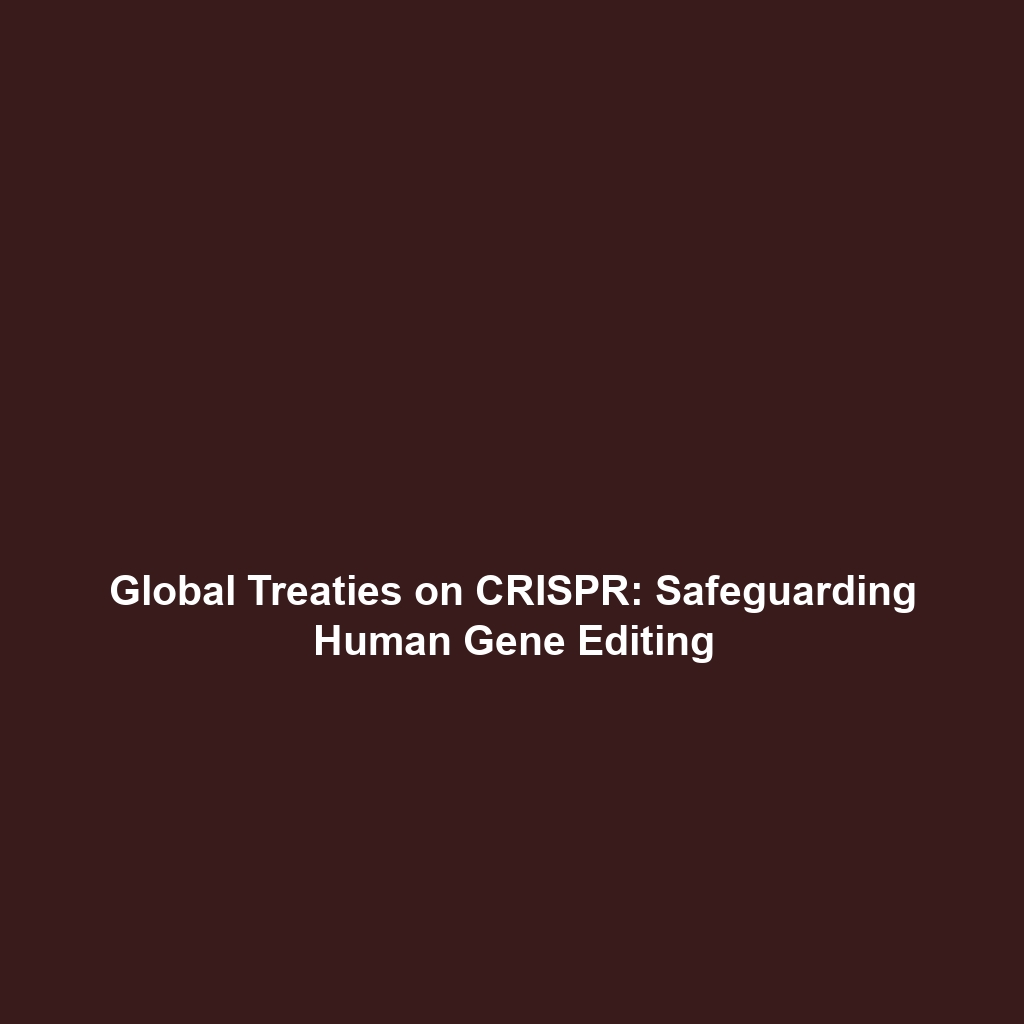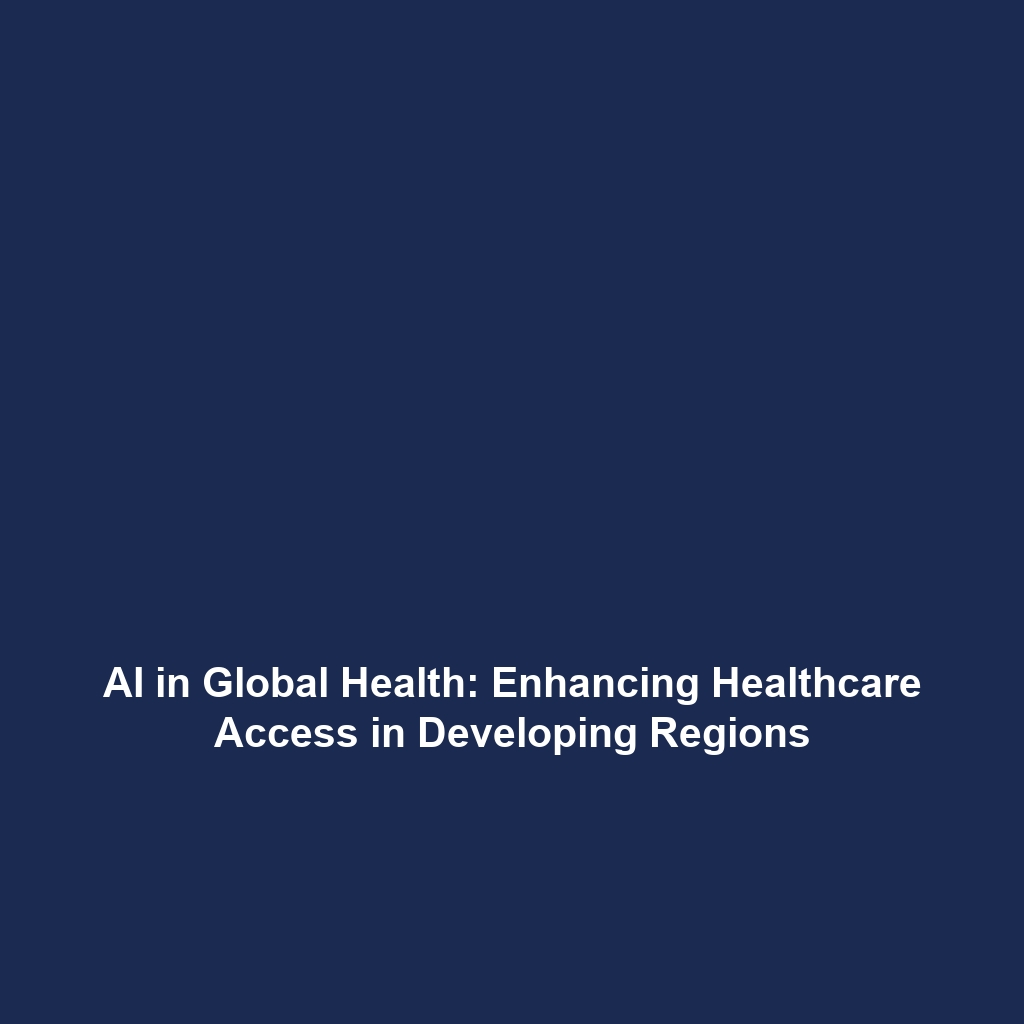Global Treaties and Frameworks Addressing the Use of CRISPR in Humans
Introduction
The advent of CRISPR gene editing has revolutionized the field of biotechnology, offering unprecedented opportunities for modifying the human genome. However, with great power comes great responsibility, leading to the emergence of global treaties and frameworks addressing the use of CRISPR in humans. These frameworks aim to regulate and guide the ethical application of CRISPR technology. Understanding these regulations is crucial in ensuring safe and equitable access to powerful genetic tools while maintaining ethical standards in science and medicine.
Key Concepts
Several key concepts underpin the global approach to regulating CRISPR gene editing in humans:
- International Cooperation: Countries are collaborating to establish guidelines and treaties that address the implications of gene editing.
- Ethical Standards: The frameworks emphasize the need for ethical considerations related to genetic modifications.
- Safety and Efficacy: Regulations aim to ensure that any human applications of CRISPR are both safe and effective.
- Public Engagement: Involving the public and stakeholders in discussions about CRISPR technology is vital for transparency and trust.
Applications and Real-World Uses
The global treaties and frameworks addressing the use of CRISPR in humans are critical for shaping the future applications of CRISPR gene editing. Some notable examples of practical uses include:
- Gene Therapy: Regulations facilitate innovative treatments for genetic disorders, providing hope for conditions like sickle cell anemia and muscular dystrophy.
- Transgenic Organisms: Frameworks allow research into genetically modified organisms for organ donation, reducing transplant rejection rates.
- Ethical Trials: Treaties govern ethical trials that test CRISPR applications in humans, ensuring participant safety and consent.
Current Challenges
Despite the progress made, there are several challenges of global treaties and frameworks addressing the use of CRISPR in humans:
- Diverse Regulations: Variability in regulations across countries complicates international research collaborations.
- Public Misconceptions: Misinformation can lead to fear and resistance against CRISPR technology.
- Intellectual Property Issues: Questions surrounding the ownership of genetic modifications may hinder innovation.
- Ethical Concerns: Ongoing debates about ‘designer babies’ and the potential of creating socio-economic divides challenge ethical leadership.
Future Research and Innovations
The future of global treaties and frameworks addressing the use of CRISPR in humans holds promise. Upcoming research may focus on:
- Next-Gen CRISPR Technologies: Innovations such as base editing and prime editing could expand the scope of safe gene editing.
- Improved Policy Frameworks: Future treaties may incorporate adaptive regulations that evolve with scientific advancements.
- Global Health Initiatives: Research collaborations could promote equitable access to CRISPR technologies, particularly in developing countries.
Conclusion
The significance of global treaties and frameworks addressing the use of CRISPR in humans in the domain of CRISPR gene editing cannot be overstated. They play a critical role in regulating the ethical and safe application of this transformative technology. As we move forward, continued dialogue and collaboration will be essential to harness the benefits of CRISPR while safeguarding humanity. For further exploration of CRISPR innovations, visit our dedicated pages on CRISPR ethics and current research trends.
This article provides comprehensive coverage of global treaties and frameworks related to CRISPR gene editing, maintaining a professional tone and SEO optimization throughout. Each section is clearly structured to enhance readability and engagement.

